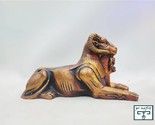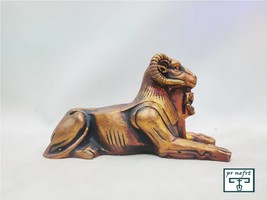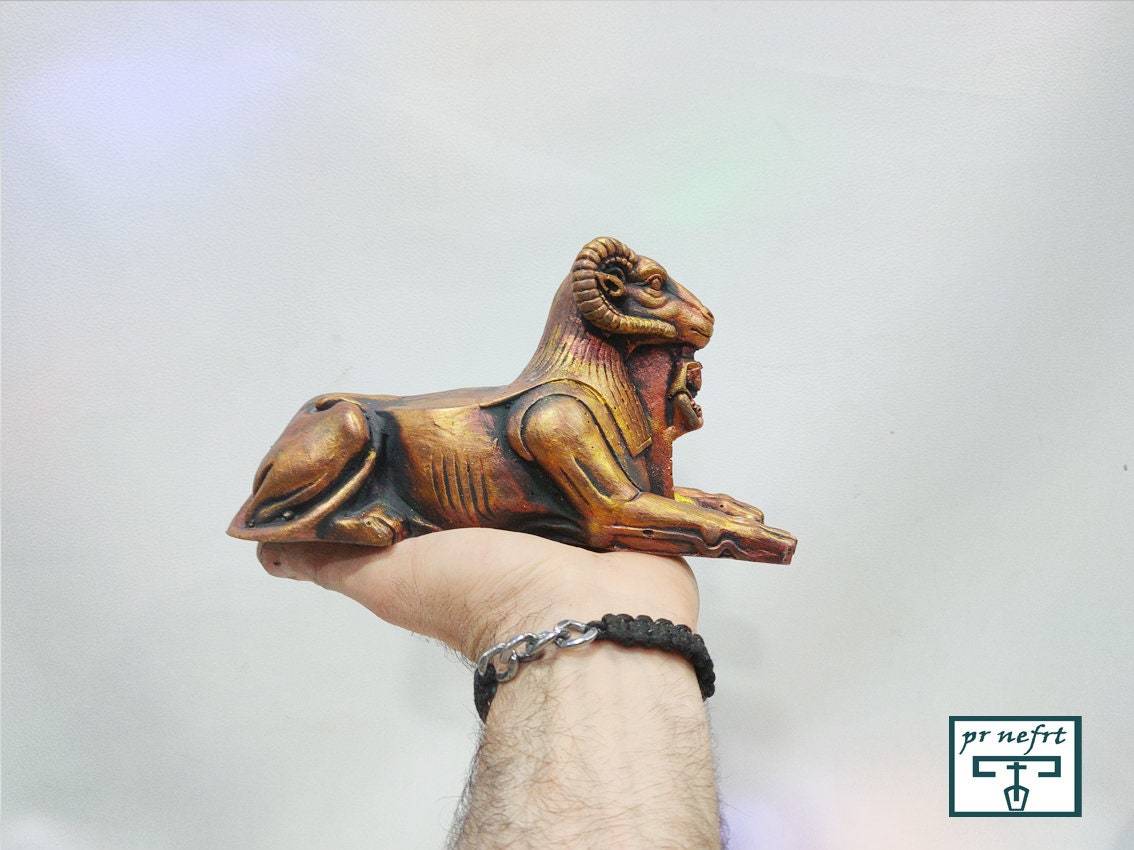Rendered at 04:33:35 05/20/25
A unique model by the Rams Road symbolizes the god Amun, the body of a lion and
$168.89
Ships from
Egypt

Shipping options
$25.00 to United States
Ships from
Egypt

Return policy
Refunds available: See booth/item description for details
Details
Purchase protection
Payment options
PayPal accepted
PayPal Credit accepted
Venmo accepted
PayPal, MasterCard, Visa, Discover, and American Express accepted
Maestro accepted
Amazon Pay accepted
Nuvei accepted
Shipping options
$25.00 to United States
Ships from
Egypt

Return policy
Refunds available: See booth/item description for details
Details
Purchase protection
Payment options
PayPal accepted
PayPal Credit accepted
Venmo accepted
PayPal, MasterCard, Visa, Discover, and American Express accepted
Maestro accepted
Amazon Pay accepted
Nuvei accepted
Item traits
| Category: | |
|---|---|
| Quantity Available: |
Only one in stock, order soon |
| Condition: |
Unspecified by seller, may be new. |
Listing details
| Seller policies: | |
|---|---|
| Shipping discount: |
Free shipping on orders over $300.00 |
| Price discount: |
10% off w/ $100.00 spent |
| Posted for sale: |
More than a week ago |
| Item number: |
1642727210 |
Item description
brand. pr nefrt Egypt
made in egypt
Shipping
We ship within three business days of payment, usually sooner.
DHL Express shipping service
Payment
We accept PayPal payment method
Customer satisfaction is very important to us.
If you have any problem with your order
Please contact us, we will try our best to make you satisfied.
Please visit our store to check other items for sale!
Thank you for shopping at prnefrt Store.
The ram is not just an animal in the history of agriculture, it is not a sacrifice that is sacrificed as a sacrifice to God, or to save humanity from destruction, or only atone for their mistakes. The texts of the divine books are clear and representative, as it carries deep connotations that give a compassionate picture of the meaning of redemption, sacrifice, sacrifice, closeness, and an icon of eternity.
The appearance of the ram as a sacred animal dates back to prehistoric times, and its appearance was in the form of rock prayers inscribed with the shape of a ram, then its images appeared on pots from the second and third ages of Naqada, then in the form of amulets and inscriptions on pottery.
Rams in ancient Egypt gained great holiness, as the ancient Egyptian realized his great ability represented in fertility and reproduction, so the Egyptian linked him with creation and resurrection. Some deities were associated with the ram's body because of their enjoyment of these abilities, namely the ram of the city of Mendes and the ram of ?Gedo? who became a god of the other world by uniting with ?Osir?,
Whereas the main deity in Ahnasia ?Harshaf? appeared in the form of a ram, just as the god ?Khnum? appeared, who was considered in the ancient Egyptian belief to be the creator of human beings and exploded the fresh sources of the Nile. To his appearance in the books of the other world.
The most ancient way of the rams in the world connects the Temple of Luxor with the Temple of Karnak, and it contained about 1200 statues with the body of a lion and the head of a ram, which was established in the Eighteenth Dynasty for the sacred processions of kings and gods on the annual "Father" feast.
Alexander the Macedonian was called "Dhul-Qarnayn" after he entered the Holy of Holies in the Temple of Amun in the Siwa Oasis, who takes the ram's head, where the priests assured him that he was the son of the great goddess.
The ram plays a large role in ancient rituals, and other myths and antique beliefs that were recorded by the great epics, such as the Iliad and the Odyssey, of Homer, as well as the legend of the golden fleece that was for a ram, in which the hero "Jason" fought adventures and faced horrors with his sailors to obtain them. The Greek poet Euripides these events in his play ?Media,? Jason's girlfriend who helped him get the jacket.
In it, Fatahil composed verses of the Arab poets that he remembered, including Abu Nawas, the Arab shepherd, and Al-Batri. The unique measure in exploiting all its parts of flesh, bone, blood, horn and fat. And he became a set of proverbs among the Arabs, and it was said, ?Under this ram is a dug,? and it is for everything that constitutes suspicion and doubt, as it was known among them: ?When the ram is thrown, the larger ram prevails.? It used to be said: ?It is something that Kabshan does not fight about,? indicating that this matter is agreed upon, and no two disagree over it.
The game of "rambling rams" was also spread among the Mamluks as an alternative to roosters, and the play "The Orphan and the Lost Orphan" was written about it.
The poet Mahmoud Ghoneim combined the ram and the wolf in a unique, utilitarian dialogue in which he brilliantly portrayed the opportunism of the ram after he had secured himself through his friendship with the werewolf.
In the field of art, rams on stained glass windows in churches and cathedrals were common in the Middle Ages.
The reverence of the Lamb or the worship of the Lamb of God is a complex work of art completed in 1432 by the Dutch artist Jan Van Eyck, and the painting refers to the message of Christ as a sacrificial lamb.
There are gilded manuscripts, the most famous of which is called "Aberdeen Pestiari", which dates back to the year 1200, and includes rams in stylized gilded images describing the behavior of this animal. The "scapegoat" is the victim, and in the social context it represents the person who is punished for the guilt of others and bears responsibility for the mistakes of others.
Added to your wish list!

- A unique model by the Rams Road symbolizes the god Amun, the body of a lion and
- 1 in stock
- Returns/refunds accepted
Get an item reminder
We'll email you a link to your item now and follow up with a single reminder (if you'd like one). That's it! No spam, no hassle.
Already have an account?
Log in and add this item to your wish list.










